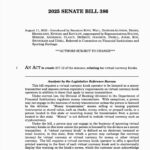Chinese Enterprises and Belt and Road Investments
Chinese enterprises participating in Belt and Road investments may soon implement RMB-denominated stablecoins to mitigate risks associated with volatile local currencies. This strategy could potentially expedite the global acceptance of the digital RMB. Recent comments from Liu Jing, chief economist for Greater China at HSBC Global Investment Research, suggest that the integration of enterprise stablecoin issuance, the digital RMB, and Hong Kong’s new stablecoin framework could transform cross-border financial activities.
Addressing Currency Volatility
Liu pointed out that businesses investing in emerging market nations frequently encounter sudden changes in local currencies. In the absence of effective hedging mechanisms, these fluctuations heighten both operational and financial risks. To tackle this issue, several large state-owned enterprises are showing interest in creating RMB-based stablecoins as payment methods for international projects.
These stablecoins could enable Chinese companies to better manage currency volatility and simplify transactions across different jurisdictions. However, the emergence of various RMB stablecoins from multiple issuers may lead to fragmentation. Liu highlighted that this fragmentation might necessitate a central, reliable platform to connect them, where the digital RMB could serve a crucial intermediary function.
The Role of the People’s Bank of China
The People’s Bank of China has already begun efforts to enhance the global use of the digital RMB. Governor Pan Gongsheng announced the creation of an international operations center for the currency during the June Lujiazui Forum. Liu proposed that this initiative reflects regulators’ willingness to extend the digital RMB’s usage beyond domestic boundaries.
By functioning as a universally recognized link between enterprise-issued stablecoins, the digital RMB could ensure settlement consistency and standardization, thereby bolstering its adoption in international trade, especially along Belt and Road corridors.
Hong Kong’s Central Role
Hong Kong is anticipated to play a pivotal role in this initiative. The city has enacted a stablecoin ordinance, which establishes a regulatory framework for developing digital payment tokens. Although the initial issuances might involve Hong Kong dollar-denominated stablecoins, this same framework could also accommodate RMB stablecoins.
As the largest global hub for RMB and with an existing currency swap agreement with the People’s Bank of China, Hong Kong is in a favorable position. Liu asserted that these factors position Hong Kong as a testing ground for expanding RMB-linked digital assets.
Important Disclaimer
The information shared in this article is intended for informational and educational purposes only. It does not serve as financial advice or any type of recommendation. Coin Edition is not liable for any losses incurred from the use of the content, products, or services discussed. Readers are encouraged to exercise caution before making any decisions related to the company.


















